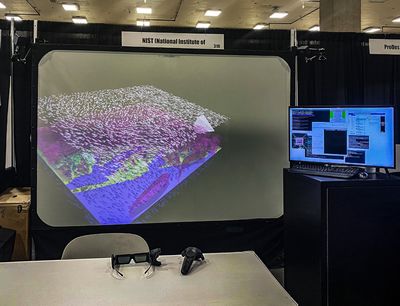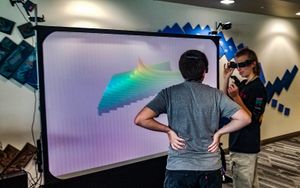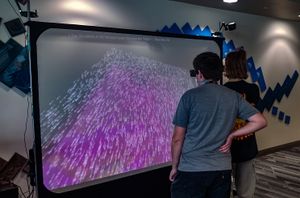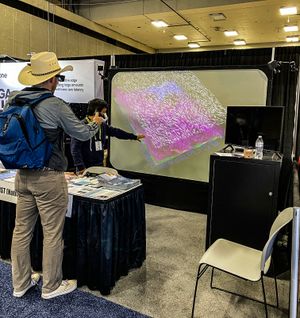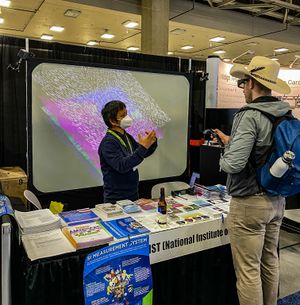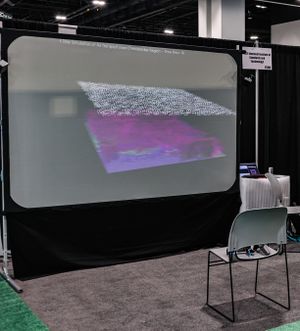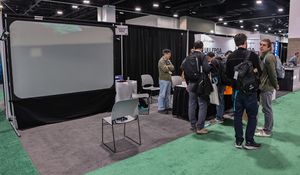Immersive Visualization / IQ-Station Wiki
This site hosts information on virtual reality systems that are geared toward scientific visualization, and as such often toward VR on Linux-based systems. Thus, pages here cover various software (and sometimes hardware) technologies that enable virtual reality operation on Linux.
The original IQ-station effort was to create low-cost (for the time) VR systems making use of 3DTV displays to produce CAVE/Fishtank-style VR displays. That effort pre-dated the rise of the consumer HMD VR systems, however, the realm of midrange-cost large-fishtank systems is still important, and has transitioned from 3DTV-based systems to short-throw projectors.
Transportable VR NIST
The current large-fishtank/CAVE-style portable VR system developed at NIST continues the tradition of "lower-cost" VR systems from the Desert Research Institute, UC-Davis, Indiana University, and the Idaho National Laboratory. The available technology has changed over the years, and so we take the lessons learned from the past and apply that to the technologies available in the present (which presently is 2022-2024).
The current NIST instantiation of the IQ-Station (or "Transportable VR Display") makes use of:
- BenQ active-stereo short-throw projector (Model LU960UST)
- ScreenWorks 7.5ft diagonal screen
- Volfoni RF transmitter (for stereo signal)
- Volfoni active stereo glasses
- Vive Lighthouse system for position tracking
- ART SMARTTRACK2 as a backup
- Vive Puck tracker (for head-tracking) and Vive Controllers
The NIST High Performance Computation and Visualization Group often brings the "IQ-Station" to conferences for demonstrations of the ImmersiveParaView Immersive Visualization features. Some places we have brought the display include:
- FOSSXR 2022
- SuperComputing 2022
- ISVC 2023
- SuperComputing 2023
- SuperComputing 2024
